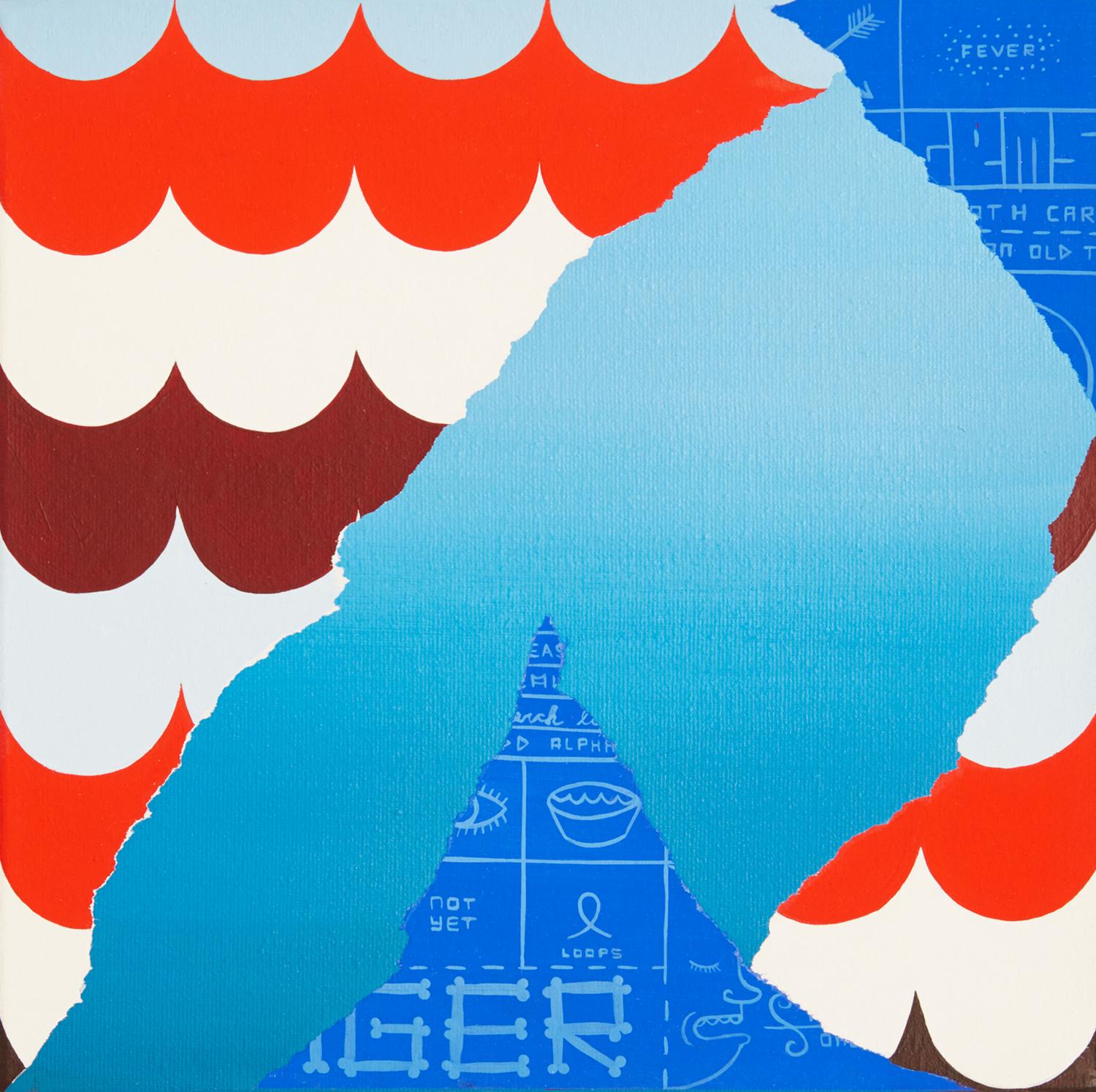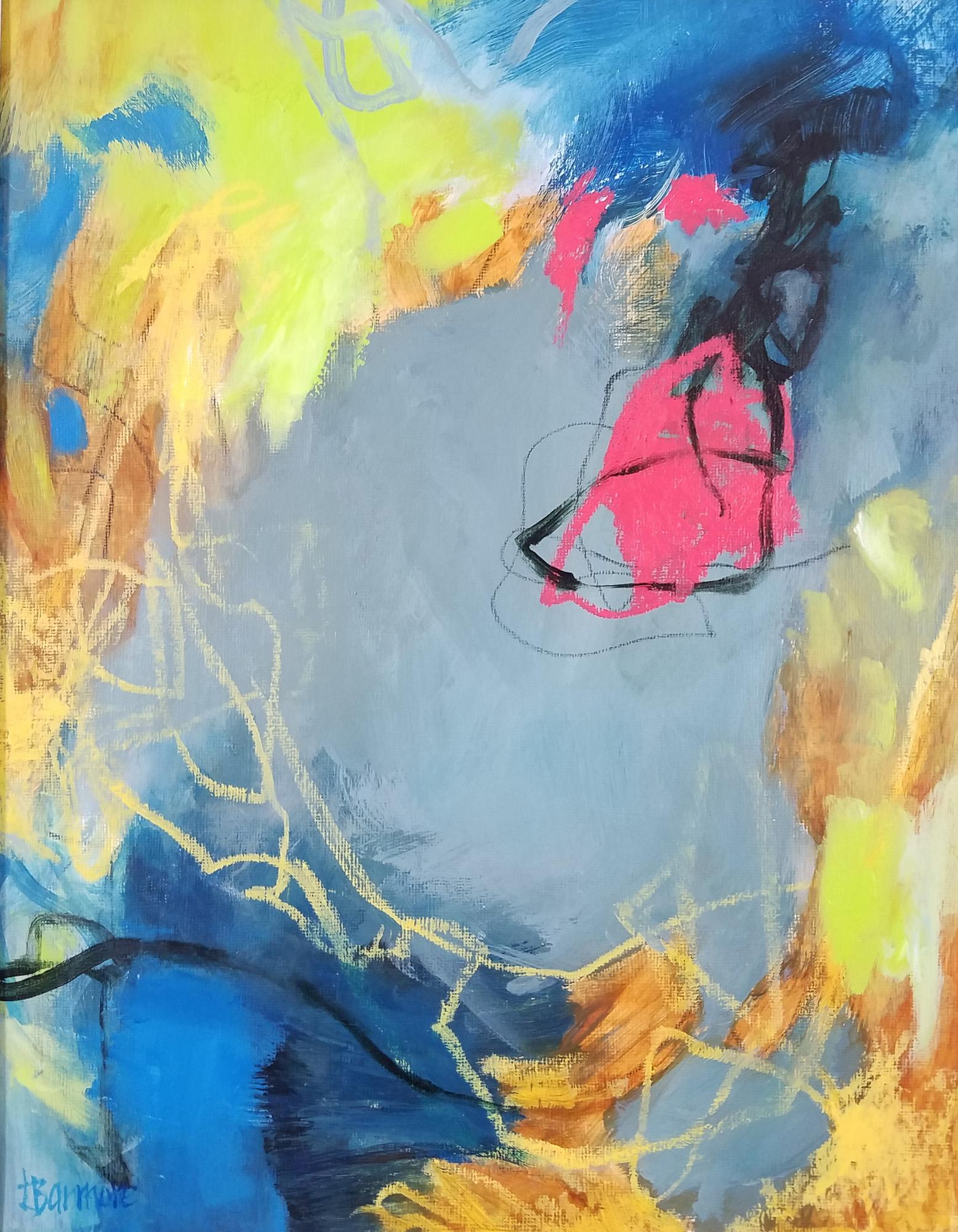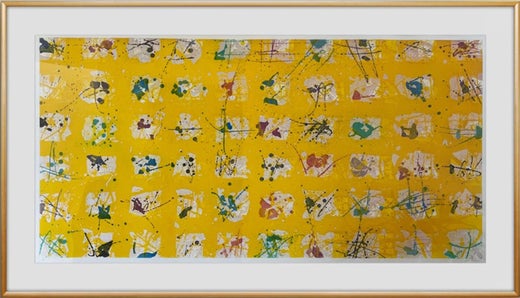Sam FrancisSF 89-153. 1989
1989
About the Item
- Creator:Sam Francis (1923–1994, American)
- Creation Year:1989
- Dimensions:Height: 44.1 in (112 cm)Width: 38.19 in (97 cm)
- Medium:
- Movement & Style:
- Period:
- Condition:Excellent.
- Gallery Location:Malmo, SE
- Reference Number:1stDibs: LU3287256802
Sam Francis
Sam Francis was an American artist known for his exuberantly colorful, large-scale abstract paintings. His practice incorporated elements from Abstract Expressionism, Color Field painting, Impressionism and Eastern philosophy to create a unique style of painterly abstraction.
Influenced by Jackson Pollock and Clyfford Still, Francis is more closely associated to the work of Helen Frankenthaler, as he was more interested in the formal arrangement of the picture plane than the expressivity of the individual artist. “Painting is about the beauty of space and the power of containment,” Francis once reflected.
Born on June 25, 1923 in San Mateo, California, Francis briefly served in the US Air Force during World War II but was injured during a test flight. Returning to California, he received his BA and MA from UC Berkeley in botany and psychology before beginning to pursue a career in art. The artist traveled widely during his career, and he was closely aligned with the Art Informel movement while living abroad in Paris during the 1950s.
Francis died on November 4, 1994 in Santa Monica, California, at the age of 71. He was a founding trustee of Los Angeles’s Museum of Contemporary Art, and his paintings can be found in the collections of the Metropolitan Museum of Art, the Kunstmuseum Basel, and the Centre Georges Pompidou in Paris, among others.
Find authentic Sam Francis art today on 1stDibs.
- ShippingRetrieving quote...Ships From: Malmo, Sweden
- Return PolicyA return for this item may be initiated within 14 days of delivery.
- Au bout, la lumièreBy Philippe HuartLocated in Malmo, SEArtwork size: 100x70 cm Frame size 116x86 cm Signed, titled and dated on the verso. Acquired directly from the artist. Free shipment worldwide. Working on a variety of perceptual ...Category
2010s Abstract Abstract Drawings and Watercolors
MaterialsPaper, Pen, Graphite
- Le jour se lèveBy Philippe HuartLocated in Malmo, SESigned, titled and dated on the verso. Acquired directly from the artist. Free shipment worldwide. Working on a variety of perceptual levels, Philippe Huart lets one visit his intim...Category
2010s Abstract Abstract Drawings and Watercolors
MaterialsPaper, Pen, Graphite
- Foot MusikBy Roberto MattaLocated in Malmo, SEFrame size 76x78 cm. Free shipment worldwide. Acquired directly from the artist. Archive number (P90/41) “The heart is an eye,” writes Nobel laureate Octavio Paz in an essay on Matta’s paintings. Matta creates a world coloured both by a sunny faith in the future and by visions of impending doom. Roberto Sebastian Echaurren Antonio Matta, who died aged 91 on 23 November 2002, was born in Santiago, Chile, on 11 November 1911 into a family with Spanish, French and Basque roots, and raised in an atmosphere of religiosity. By the age of 21 he had graduated and begun work as an architect, but his leisure time he devoted to sketching and painting. In 1933 he travelled to Europe for the first time, visiting Greece, Yugoslavia, Italy and other countries, and subsequently taking the initiative to collaborate with the architect, Le Corbusier. As time passed, however, Matta’s enthusiasm for a career in architecture waned, and he began to devote himself full-time to art, making early acquaintances with surrealists such as Max Ernst, Salvador Dalí, André Breton and others. Between 1939 and 1948 Matta, like many of his artistic contemporaries, lived in self-imposed exile in the USA, but, after almost 10 years’ absence from Europe, he returned to make first Rome and then, a few years later, Paris his home. Throughout most of the rest of his life Matta commuted between his studio in Paris and his creative refuge in the monastery outside Rome. And it is here, in Italy, that he produced his greatest paintings. Matta’s first retrospective in Sweden was organised in 1956 when his works were exhibited in what was then Galerie Colibri – run by, among others, the artist C O Hultén...Category
1990s Surrealist Drawings and Watercolor Paintings
MaterialsGouache, Mixed Media
- Foot Musik.By Roberto MattaLocated in Malmo, SEPastel, gouache and coffee on paper. Artwork size: 58 x 56 cm. Frame size: 78 x 76 cm. Free shipment worldwide. Acquired directly from the artist. Archive number (P90/37) “The heart is an eye,” writes Nobel laureate Octavio Paz in an essay on Matta’s paintings. Matta creates a world coloured both by a sunny faith in the future and by visions of impending doom. Roberto Sebastian Echaurren Antonio Matta, who died aged 91 on 23 November 2002, was born in Santiago, Chile, on 11 November 1911 into a family with Spanish, French and Basque roots, and raised in an atmosphere of religiosity. By the age of 21 he had graduated and begun work as an architect, but his leisure time he devoted to sketching and painting. In 1933 he travelled to Europe for the first time, visiting Greece, Yugoslavia, Italy and other countries, and subsequently taking the initiative to collaborate with the architect, Le Corbusier. As time passed, however, Matta’s enthusiasm for a career in architecture waned, and he began to devote himself full-time to art, making early acquaintances with surrealists such as Max Ernst, Salvador Dalí, André Breton and others. Between 1939 and 1948 Matta, like many of his artistic contemporaries, lived in self-imposed exile in the USA, but, after almost 10 years’ absence from Europe, he returned to make first Rome and then, a few years later, Paris his home. Throughout most of the rest of his life Matta commuted between his studio in Paris and his creative refuge in the monastery outside Rome. And it is here, in Italy, that he produced his greatest paintings. Matta’s first retrospective in Sweden was organised in 1956 when his works were exhibited in what was then Galerie Colibri – run by, among others, the artist C O Hultén at number 36 Södra Förstadsgatan in Malmö, Sweden. This was also the time when Matta began to collaborate with poets and other artists in Sweden. He produced the illustrations for Lasse Söderberg’s first anthology of poems, Akrobaterna (“The Acrobats”), published in 1955, and was also responsible for the cover of the Swedish art and literary magazine Salamander. In 1959 the first museum exhibition of Matta’s work in Europe was arranged at the Museum of Modern Art (Moderna Museet) in Stockholm. Held under the aegis of Pontus Hultén, it was entitled “Fifteen Forms of Doubt” and included 15 or so gigantic paintings...Category
1990s Abstract Mixed Media
MaterialsMixed Media
- Foot MusikBy Roberto MattaLocated in Malmo, SEArtwork size: 56 x 58 cm. Frame size: 76 x 78 cm. Free shipment worldwide. Archive number (P90/36) Acquired directly from the artist. “The heart is an eye,” writes Nobel laureate Octavio Paz in an essay on Matta’s paintings. Matta creates a world coloured both by a sunny faith in the future and by visions of impending doom. Roberto Sebastian Echaurren Antonio Matta, who died aged 91 on 23 November 2002, was born in Santiago, Chile, on 11 November 1911 into a family with Spanish, French and Basque roots, and raised in an atmosphere of religiosity. By the age of 21 he had graduated and begun work as an architect, but his leisure time he devoted to sketching and painting. In 1933 he travelled to Europe for the first time, visiting Greece, Yugoslavia, Italy and other countries, and subsequently taking the initiative to collaborate with the architect, Le Corbusier. As time passed, however, Matta’s enthusiasm for a career in architecture waned, and he began to devote himself full-time to art, making early acquaintances with surrealists such as Max Ernst, Salvador Dalí, André Breton and others. Between 1939 and 1948 Matta, like many of his artistic contemporaries, lived in self-imposed exile in the USA, but, after almost 10 years’ absence from Europe, he returned to make first Rome and then, a few years later, Paris his home. Throughout most of the rest of his life Matta commuted between his studio in Paris and his creative refuge in the monastery outside Rome. And it is here, in Italy, that he produced his greatest paintings. Matta’s first retrospective in Sweden was organised in 1956 when his works were exhibited in what was then Galerie Colibri – run by, among others, the artist C O Hultén at number 36 Södra Förstadsgatan in Malmö, Sweden. This was also the time when Matta began to collaborate with poets and other artists in Sweden. He produced the illustrations for Lasse Söderberg’s first anthology of poems, Akrobaterna (“The Acrobats”), published in 1955, and was also responsible for the cover of the Swedish art and literary magazine Salamander. In 1959 the first museum exhibition of Matta’s work in Europe was arranged at the Museum of Modern Art (Moderna Museet) in Stockholm. Held under the aegis of Pontus Hultén, it was entitled “Fifteen Forms of Doubt” and included 15 or so gigantic paintings...Category
1990s Surrealist Abstract Drawings and Watercolors
MaterialsMixed Media
- Trois bleus en diagonale.By James CoignardLocated in Malmo, SEAcquired directly from the artist. Unique artwork. Artwork size: 9,5 x 17 cm. Frame size: 27 x 34 cm Frame in silver. Museum glass anti-reflective. Free shipment worldwide. “With ju...Category
Early 2000s Abstract Mixed Media
MaterialsMixed Media
- "Brutalist Blue Tablet" Painting on Paper Furniture Design Raw Gouache AcrylicBy Amanda AndersenLocated in Hamburg, HHMade in 2023 by Amanda Andersen, this geometric abstract painting on paper is one in a series of nine minimal artworks with a visual simplicity in...Category
2010s Contemporary Abstract Paintings
MaterialsPaper, Gouache, Acrylic, Color Pencil
- "TORRENTS", Red and White Abstract Acrylic PaintingBy Jim HouserLocated in Philadelphia, PAThis red and white abstract wall-hanging artwork titled "TORRENTS" is an original artwork by Jim Houser made of acrylic on panel. This piece mea...Category
21st Century and Contemporary Contemporary Abstract Paintings
MaterialsPaper, Acrylic, Panel
- "DANGER!", Blue, Red, and White Abstract Acrylic Paint and Collage on CanvasBy Jim HouserLocated in Philadelphia, PAThis blue, red, and white wall-hanging artwork titled "DANGER!" is an original artwork by Jim Houser made of acrylic and collage on canvas. This piece measures 10"h x 10"w. Jim Hous...Category
21st Century and Contemporary Contemporary Abstract Paintings
MaterialsCanvas, Paper, Acrylic
- Duke and Wigmore Series #1By Gary KomarinLocated in Fairfield, CTBorn in New York City, the son of a Czech architect and Viennese writer, Gary Komarin is a risk taker in contemporary painterly abstraction. Komarin’s stalwart images have an epic qu...Category
21st Century and Contemporary Contemporary Abstract Paintings
MaterialsAcrylic, Archival Paper
- Bound (Sea) - Abstract Spray Paint and Fiber on PaperBy Vivian LiddellLocated in Gilroy, CALiddell often walks the line between contemporary art and craft. Working to bring materials that are traditionally labeled as "craft" and lesser into the contemporary conversation. M...Category
2010s Contemporary Abstract Paintings
MaterialsPaper, Spray Paint, Textile, Thread, Acrylic
- Sheltering #10 - Abstract Expressionist Painting on Paper (Teal+Pink+Yellow)By Laurie BarmoreLocated in Gilroy, CA"Sheltering #10," is a contemporary abstract expressionist painting by Laurie Barmore. Her works are extremely dynamic, with impressionist-like strokes. This piece will modernize a...Category
2010s Contemporary Abstract Paintings
MaterialsPaper, Acrylic






